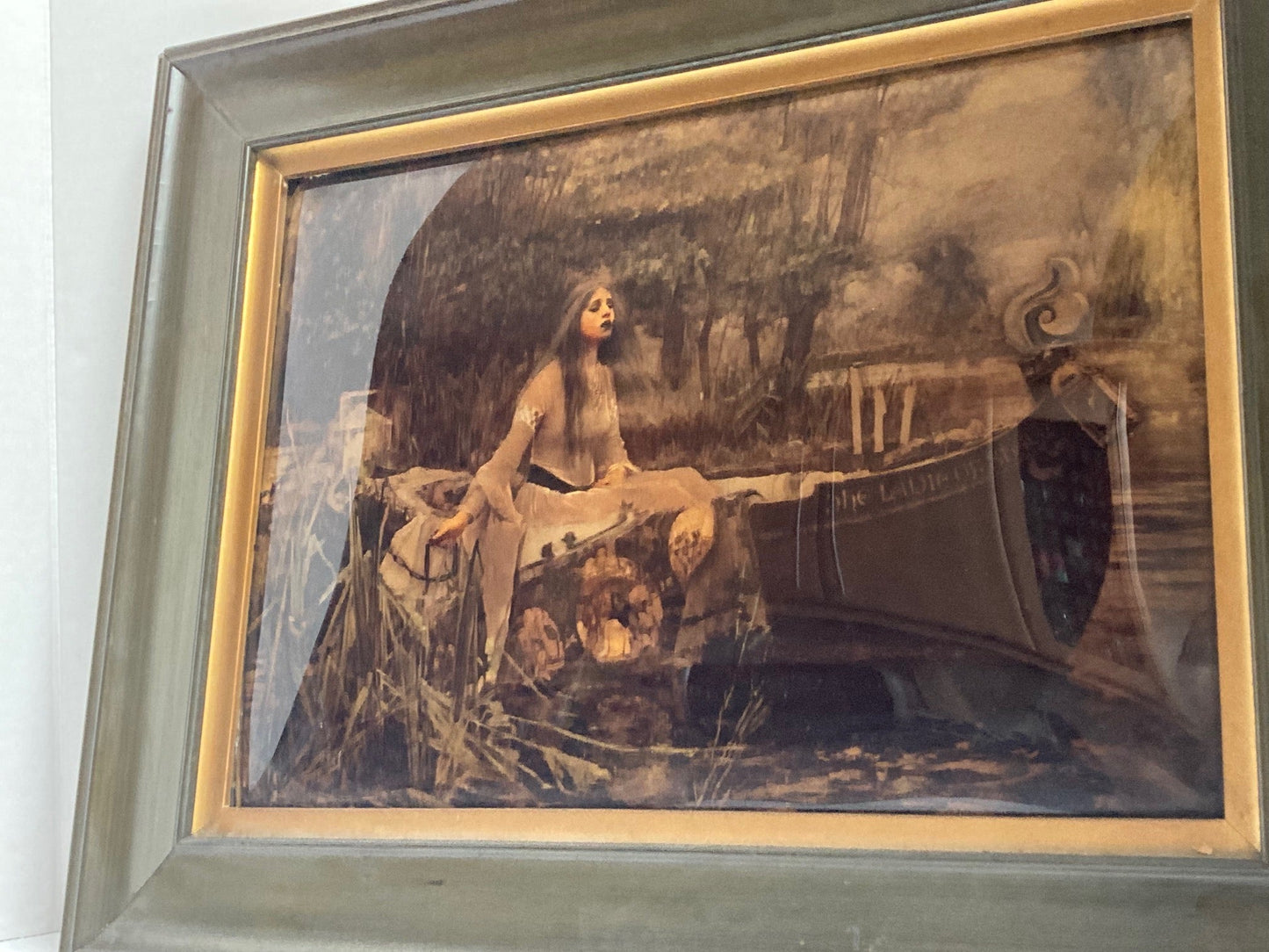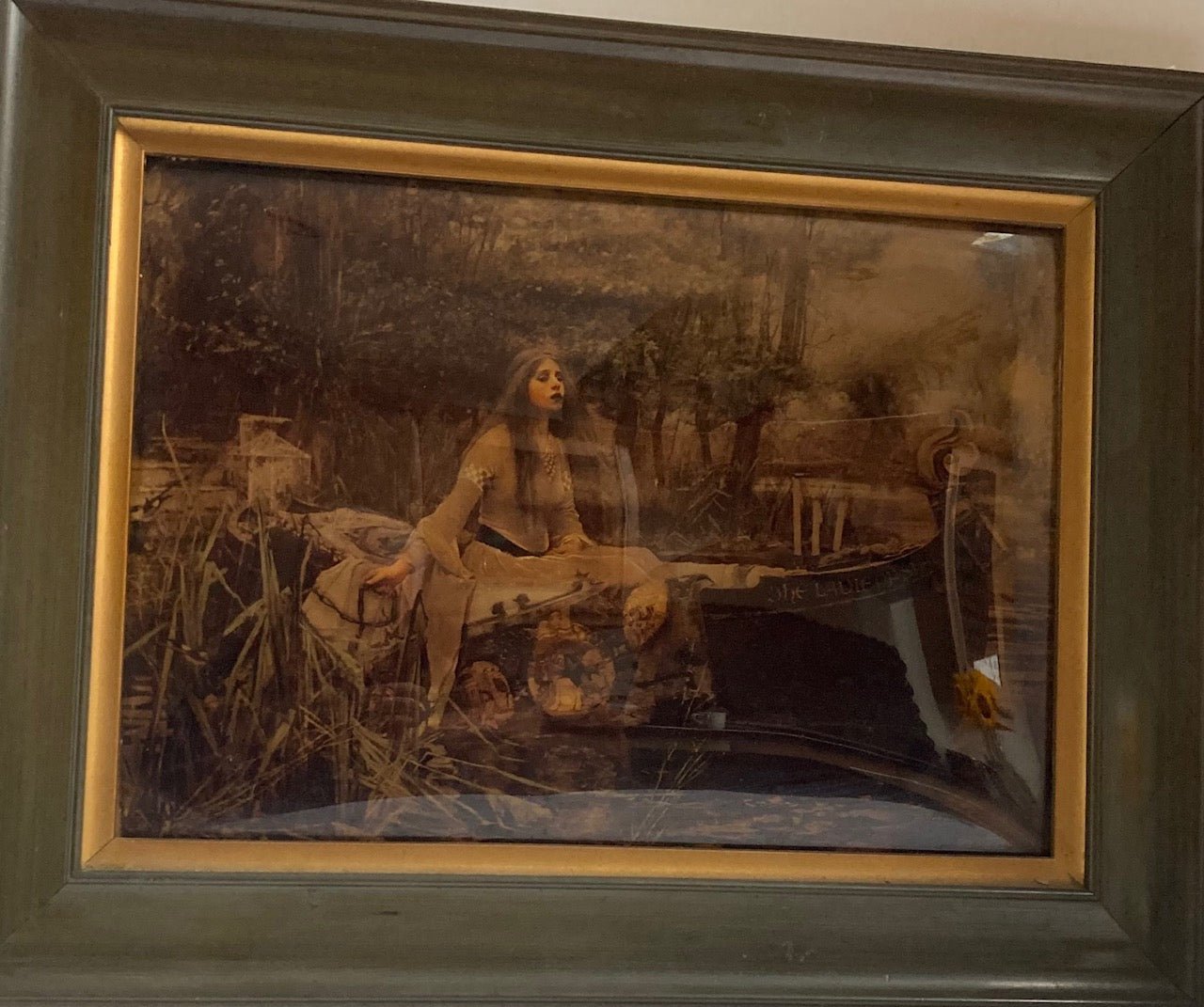Room Four
Sold - Lady of Shallot Crystoleum
Sold - Lady of Shallot Crystoleum
Precio habitual
£0.00 GBP
Precio habitual
Precio de oferta
£0.00 GBP
Precio unitario
/
por
Los gastos de envío se calculan en la pantalla de pago.
No se pudo cargar la disponibilidad de retiro
A charming late 19th Century Concave Crystoleum "The Lady of Shallot"
After "The Lady of Shalott" an 1888 oil on canvas painting, one of John William Waterhouse's most famous works. It depicts a scene from Tennyson's poem in which the poet describes the plight and the predicament of a young woman, loosely based on the figure of Elaine of Astolat from medieval Arthurian legend, who yearned with an unrequited love for the knight Sir Lancelot isolated under an undisclosed curse in a tower near King Arthur's Camelot. Waterhouse painted three versions of this character, in 1888, 1894 and 1915.
The concave glass adds a special dimension and reflects the light beautifully (difficult to capture in the photographs). The original gilt frame shows some wear commensurate with age but by no way diminishes the overall feel of the piece.
Dimensions: Frame 36cm x 46 cm. Image 24cm x 34cm
The process of Crystoleum:
Crystoleum, from “crystal” + “oleum” (oil), was a photographic format which appeared in the 1880s and 1890s and enjoyed a period of popularity which lasted until the Great War.
The process of crystoleum was a method of applying colour to an albumen print which was then pasted face down to the inside of a concave piece of glass. Once the adhesive (usually starch paste or gelatine) was dry, the paper backing of the print was rubbed away, leaving only the transparent emulsion on the glass. The image was then coloured by hand, using oil paints. Another piece of glass was added to the back and this could also be coloured by hand. Both pieces of glass were bound together creating a detailed, albeit fragile, image. The process was derived from the 18th century mezzotint process.
Compartir










